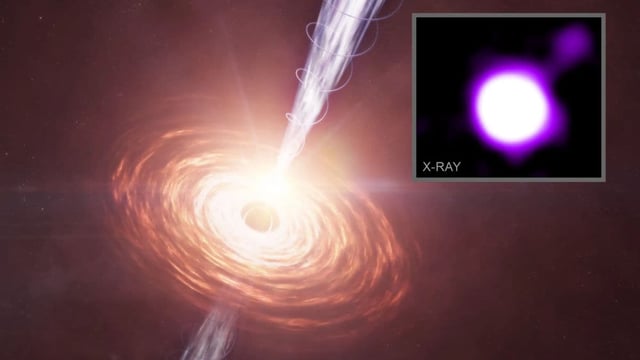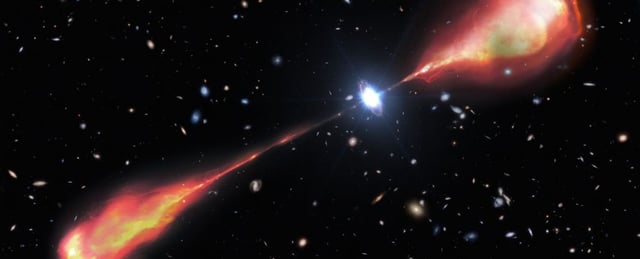Overview
- Chandra identified jets from quasars J1405+0415 and J1610+1811 11.6 billion light-years away with particles traveling between 95% and 99% of light speed
- Collisions between jet electrons and the dense cosmic microwave background produced X-ray signals that revealed the jets’ presence and velocity
- Quasar J1601+3102, seen less than 1.2 billion years after the Big Bang, is blasting plasma streams spanning 215,000 light-years end to end
- Despite a relatively modest mass of 450 million times that of the Sun, J1601+3102’s black hole drives powerful jets, suggesting quasar outflows may not require extreme mass or accretion rates
- Scientists used a suite of instruments—including NASA’s Chandra, the VLA, LOFAR, Gemini North and the Hobby-Eberly Telescope—to build a detailed view of early black hole jet phenomena

